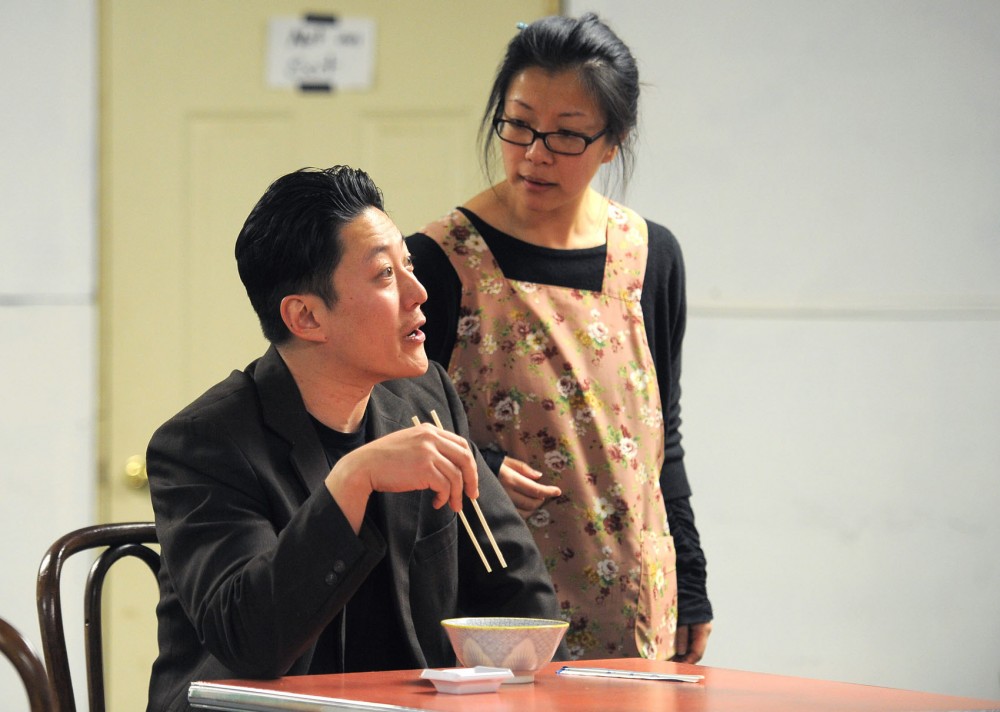What: “Yellow Fever”
When: Times vary, Saturday through March 24
Where: Guthrie Theater, Dowling Studio, 818 S. Second St., Minneapolis
Cost: $22-$34
Rick Shiomi had been solidifying his spot among the godfathers of the Asian-American theater community well before he came to Minnesota in the early ’90s. Blending in to previously established companies in New York, Los Angeles and elsewhere in his career, Shiomi’s move to the Twin Cities provided a touch of culture shock.
“Suddenly I’m here, and there’s nowhere to fit in because there is no Asian-American theater company,” he said.
The artistic director and co-founder of Mu Performing Arts didn’t allow this to be the case for long, and 20 years later Mu is a powerhouse in the local and national theater scene. “Yellow Fever,” directed and written by Shiomi, is the company’s fourth show in the Guthrie’s Dowling Studio and Shiomi’s final production before he resigns from his position.
Set in 1970s Japantown, Vancouver, the filmic noir piece follows the exploits of Bogart-like detective Sam Shikaze (played by Kurt Kwan) on his search to solve a kidnapping. In the quick progression of the play, Shikaze finds himself engulfed in a barrage of corrupt, racist politics that lead him to discover unfortunate realities in his community.
Originally produced in 1982, “Yellow Fever” is Shiomi’s staple. The piece has numerous productions around the nation and is praised for its subversive use of the cinematic style. It melds the aesthetic with an analysis of the Asian-Canadian experience in the 1970s, specifically in response to Japanese internment during World War II.
“I didn’t want to tell it directly as a historical play,” Shiomi said, “so I wrote a detective mystery comedy but with the roots of that experience as the motivating power for the characters.”
Like his characters, Shiomi’s culture is strongly tied to his personality as well as his art. The main objective of Mu is to bring attention to Asian-American artists and spread their work in a community that he feels habitually overlooks the group.
“A theater company like the Guthrie or Mixed Blood might say, ‘We’ll do an Asian-American play once every two or three years,’”**** he said. “But that play gets lost. It can become an obligatory thing.”
According to Sara Ochs, who plays the sharp-as-a-tack “liberated woman of the ’70s” Nancy Wing, Shiomi focuses on cultivating artists of promise and building relationships with them.
“I moved to South Korea in 2006 and was there for five years, and once every 12 to 18 months Rick would email and say ‘Hey! You wanna come do a show?’”**** she said. “He kept giving me opportunities even when I was halfway across the world.”
Ochs partly credits Mu for encouraging her to own her ethnicity’s cultural background. As a Korean-American adoptee that grew up in small-town Wisconsin, Ochs found her exposure to other Asian artists inspiring and formed a strong connection with the group.
“I had my eyes opened really wide and realized I didn’t have to avoid being Asian and that I was an Asian,” she said. “I started to explore more.”
Mu has given a voice to a number of artists, including the likes of Sun Mee Chomet and Lauren Yee. Helping artists succeed fuels Shiomi, and although his passions are as strong as ever, he recently decided to step down as artistic director.
“One doesn’t want to be too long in any place. I don’t view myself as retiring — I still have the same purpose but in a different role,” he said.
Shiomi is by no means out of the game; he plans to continue writing and directing. But his departure from Mu won’t go unnoticed. Even though the company’s future looks bright with the announcement of incoming artistic director Randy Reyes, Shiomi’s legacy is an integral part of the theater group. Actor Kwan sums up the feelings of the ensemble pretty well, looking back on Shiomi’s sometimes cryptic critiques from a “Yellow Fever” rehearsal.
“I got a text from a fellow actor after rehearsal saying, ‘You know, someday we’re going to miss his circular notes.’ And I just thought about that for a second, and it hit home for the first time.”














